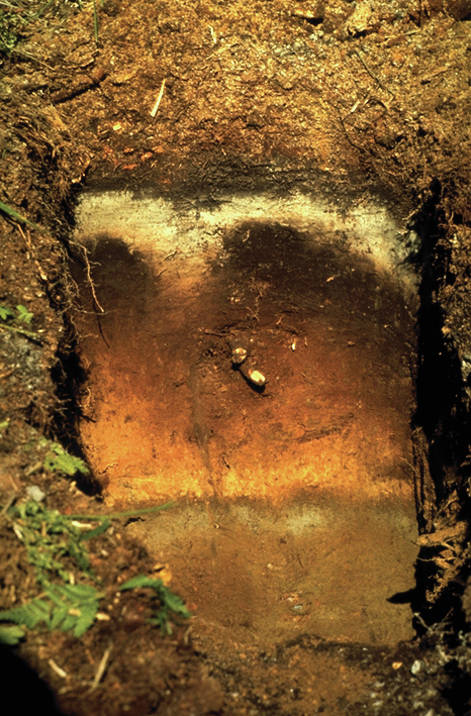This is the next installment in the series, A Soils Primer for Homer.
The Kenai Lowlands, from Homer to Turnagain Arm, are dominantly mantled by glacial deposits. Locally, glacial moraines are prominent landforms on the Sterling Highway and Old Sterling Highway from Diamond Creek to Anchor Point. In the City of Homer glacial moraines are present but less obvious. Good examples are immediately upslope from the Pioneer Ave carwash and south of the Pioneer Ave/ Main Street intersection. Mutnala soils occur on these moraines.
Mutnala soils formed in a relatively thin mantle of volcanic ash and wind deposited silt from outwash plains of receding glaciers. The underlying glacial till is generally gravelly and cobbly with a loamy matrix. Depressional areas between the moraines commonly have poorly drained soils and small ponds.
In soils, there is a taxonomy (scientific classification) similar to plant and animal taxonomies. As my father-in-law would say, it’s the “fancy name” for everything. The highest taxonomic level is the soil order. All soils in the world can be placed in one of 12 orders. Mutnala soils are Spodosols, which are probably among the most photogenic of soil orders. Spodosols are common in the Pacific Northwest, upper Mid-West, and New England. Vegetation has a role in the development of these soils. Water percolating through the organic surface layer leaches down through the upper mineral layer, combines with iron and aluminum, and is translocated from this horizon and deposited below. This results in a whitish horizon above a reddish-brown subsurface layer. The process is called podozolization.
Mutnala soils are acidic and naturally infertile but can be corrected by liming, fertilization and adding compost. The silty solum has good physical properties for gardening and farming, but is sometimes slightly more than a foot thick. Care should be taken not to remove the thin layer of topsoil and get stuck with gardening the gravelly substratum. Be thankful that there is a relatively gravel free surface layer. Many places in the country, with soils developed in glacial till, have gravel and cobble to the surface. One cobble can destroy the innards of a combine in a split second. Visualize what would happen if you put a large piece of gravel in your blender or hit a rock with your lawn mower. The results are the same. Apparently, New England has lots of rocky glacial till. As Pulitzer Prize author John Updike wrote, “There is no pleasing New Englanders, my dear, their soil is all rocks and their hearts are bloodless absolutes.” Yikes John, those are strong words about soils!
Mutnala soils are not suitable as fill material if the application requires non-frost susceptible (NFS) material as in road construction, under footers and slabs. The unsorted glacial till has too much loamy material and is susceptible to frost action. Fortunately, during glacial melting and retreat, some of the glacial till is sorted by water. This sorting process produces deposits of relatively clean sand and gravel which are NFS. When in doubt, it is a good practice to remove frost-susceptible soil and replace it with coarse granular NFS material.
If you are interested in the technical details of soils, a wealth of information is available from Natural Resources Conservation Service (NRCS) at https://www.nrcs.usda.gov/wps/portal/nrcs/main/soils/survey/. Soil Survey reports and maps for the Western Kenai Peninsula (Homer to Point Possession), the Lower Kenai Peninsula (Jakolof Bay to East Chugach Island), and most counties in the U.S. are also available through the link above. The US soil survey program began in 1899 and continues today. Surveys are updated as technology develops.
Doug Van Patten, a retired soil scientist, had the pleasure of exploring, classifying, and mapping soils throughout Alaska, and parts of Montana, Hawaii, and Florida for forty years. He moved to Alaska in 1976 from Montana, worked as a soil scientist/project leader for 30 years with USDA/NRCS followed by 10 years of part-time work as a senior soil scientist with various private consulting firms including HDR Engineering and Three Parameters Plus, Inc.


